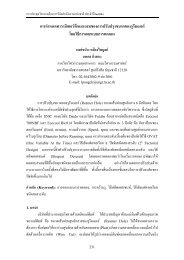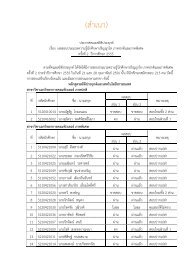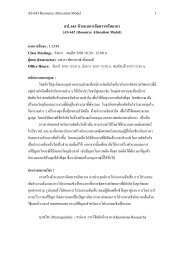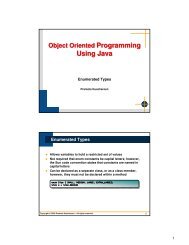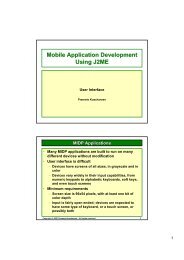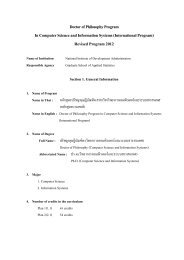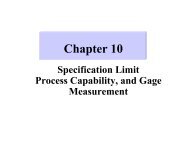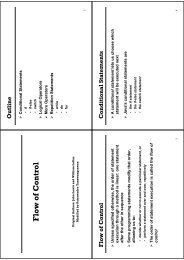ดาวน์โหลด All Proceeding - AS Nida
ดาวน์โหลด All Proceeding - AS Nida
ดาวน์โหลด All Proceeding - AS Nida
Create successful ePaper yourself
Turn your PDF publications into a flip-book with our unique Google optimized e-Paper software.
3. Experiments<br />
The objective function was defined by considering the ratio<br />
of the heat duty of the reboiler (Q R1+Q R2) and the specified production<br />
of ethanol (D) [3]. The volume fraction of the ethanol was fixed at 0.95<br />
at top of the rectifying column. The objective function was inserted by<br />
means of the Aspen HYSYS ® .<br />
The procedure starts with the simulation of conventional<br />
distillation column and heat integrated distillation column which uses<br />
data as shown in Table 1 respectively. The total amount of heat rejected<br />
from the mash column (Q R1) and rectifying column (Q R2) will be<br />
compared.<br />
Table 1. Data for simulation conventional and heat integrated<br />
distillation column<br />
Paramters Value<br />
Feed flow rate (F), kmol/h 2335<br />
Number of stages for mash column (N1) 17<br />
Feed stage to mash column (NF1) 6<br />
Number of stages for rectifying column (N2) 25<br />
Feed stage to rectifying column (NF2) 13<br />
Mash feed temperature (TF), o C 30<br />
Volume fraction of ethanol in mash feed (ZF) 0.08<br />
Volume fraction of ethanol in distillate of mash column (XD1) 0.6<br />
Volume fraction of ethanol in distillate of rectifying column (XD2) 0.95<br />
Reflux ratio mash column (R1) 3<br />
Reflux ratio rectifying column (R2) 200<br />
And then the simulation uses to design optimized process for<br />
heat integrated distillation column [4]. A simple procedure is shown in<br />
Fig 4.<br />
1. Conduct the design of the heat integrated distillation column :<br />
determine the number of stages, feed location, feed flow rate, feed<br />
temperature, mole fraction of feed in, output flow rate, mole fraction of<br />
output and reflux ratio.<br />
2. Sensitivity test : evaluate the influence of the main variables and to<br />
decide which variable should be manipulated.<br />
3. Simulate to optimize energy consumption : vary the main variables<br />
which get from sensitivity test as shown in Table.2 (Reflux ratio of<br />
mash column (R 1), volume fraction of ethanol in distillate of mash<br />
column (X D1) and distillate flow rate of rectifying column (D 2)) [5-6].<br />
158<br />
4. Compare and conclude for the optimized design – min Q R/D<br />
Conduct the design of the<br />
heat integrated distillation<br />
column<br />
Sensitivity test (R 1, R 2, X D1,<br />
feed stage and D 2)<br />
Simulate to optimize energy<br />
consumption (by vary R 1,<br />
X D1 and D 2)<br />
Compare and conclude for<br />
optimized design<br />
min Q R/D<br />
Obtain the optimization<br />
process<br />
Fig. 4 Procedure for design optimized process<br />
for heat integrated distillation column<br />
QR = QR1 + QR2 5. Obtain the optimization process<br />
(1)<br />
Table 2. Design of experiment to design optimized process for heat<br />
integrated distillation column<br />
Case R1 XD1 D2 (kmol/h)<br />
1 0.5 0.7 60<br />
2 0.5 0.8 60<br />
3 0.5 0.7 70<br />
4 0.5 0.8 70<br />
5 1 0.7 60<br />
6 1 0.8 60<br />
7 1 0.7 70<br />
8 1 0.8 70




